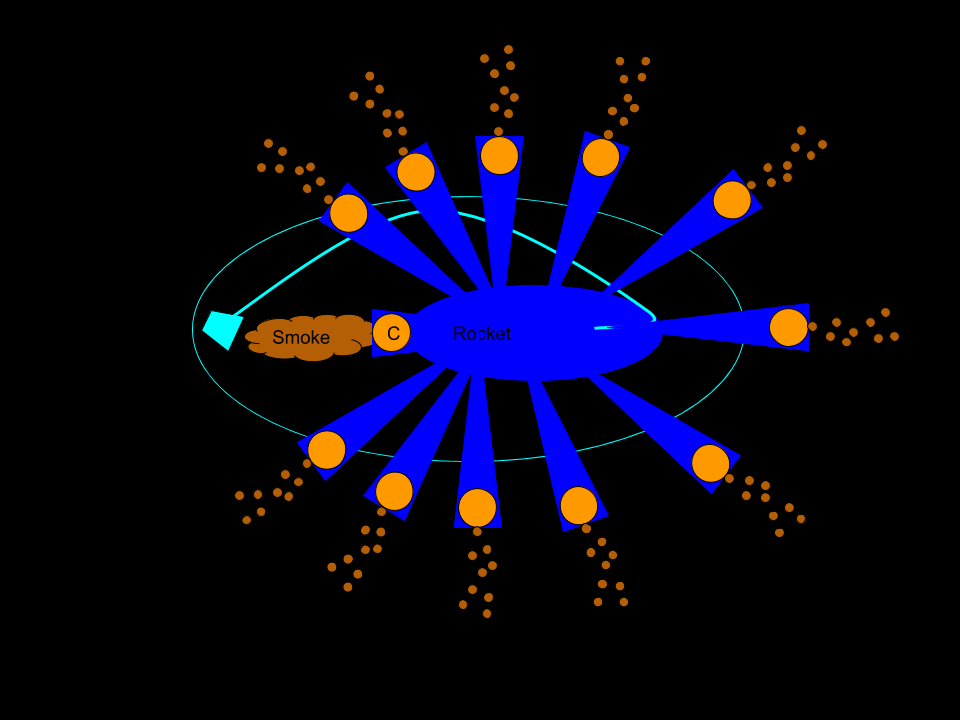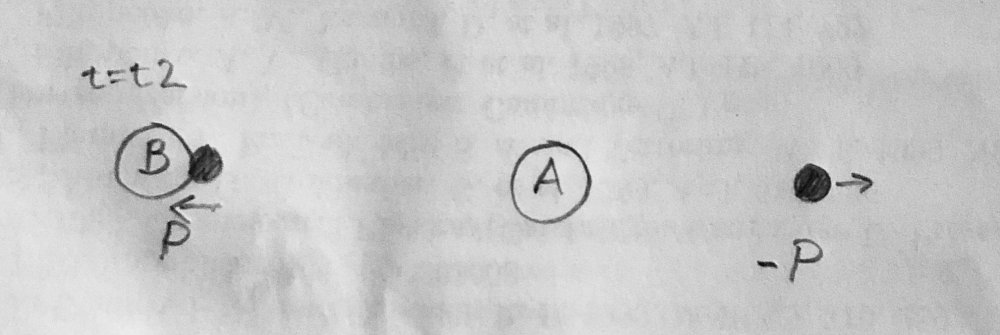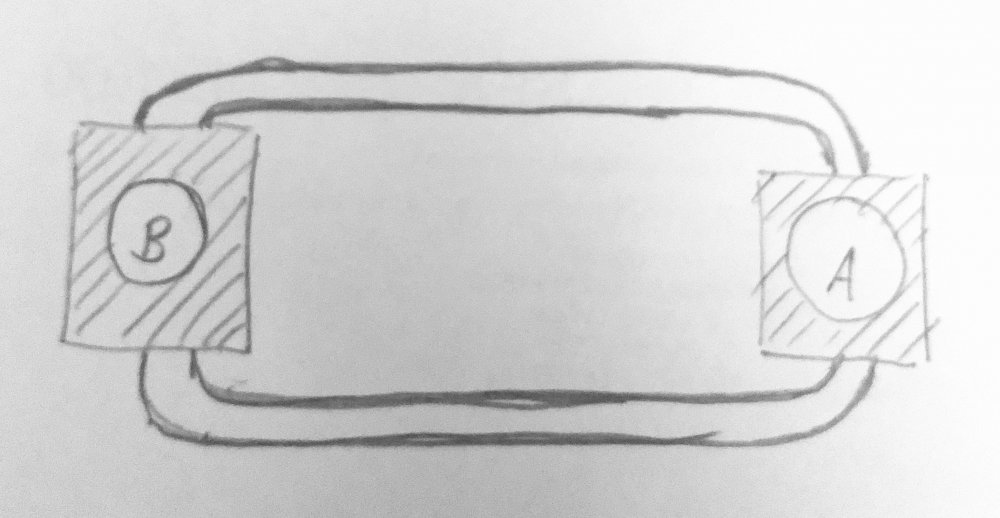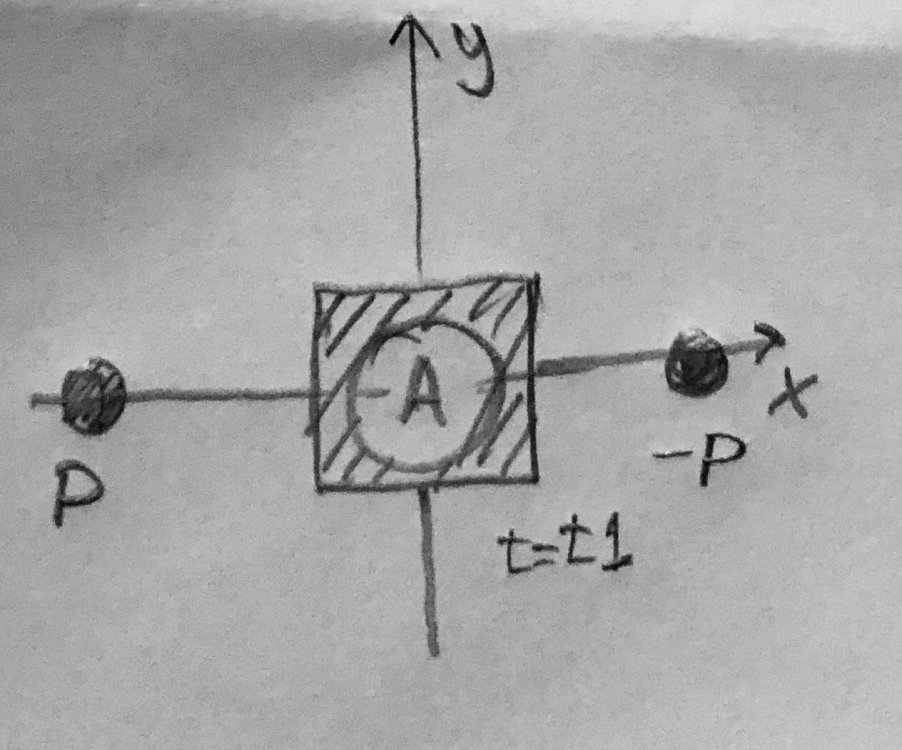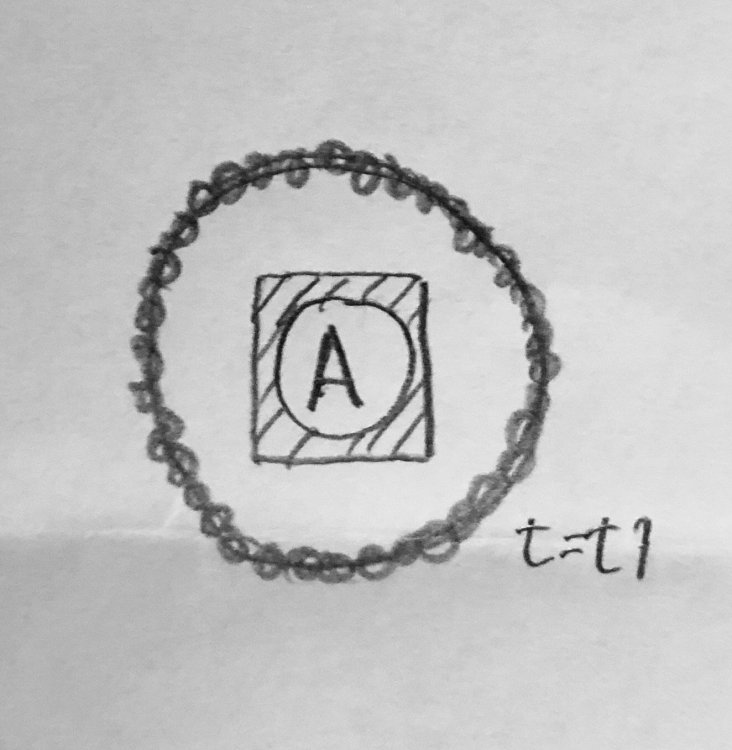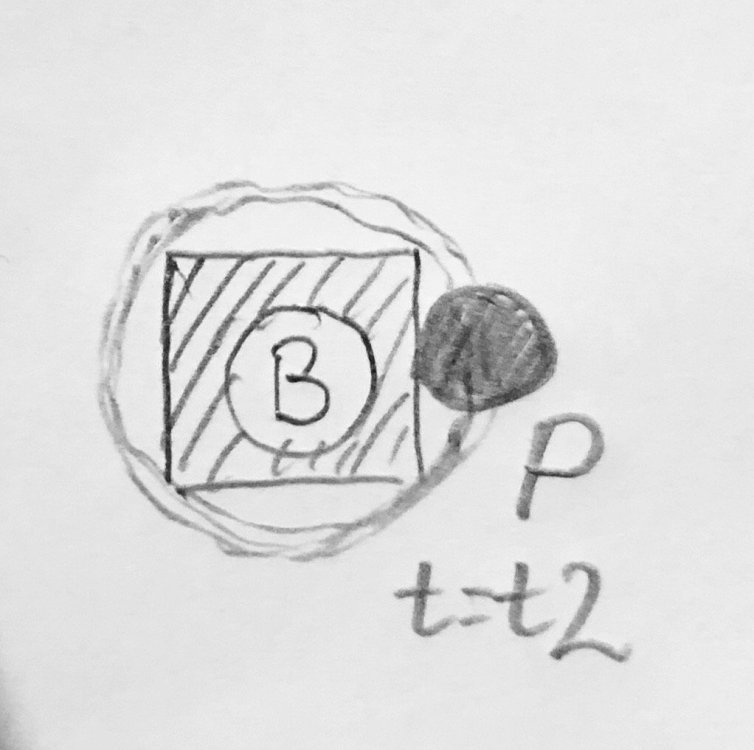-
Posts
2581 -
Joined
-
Days Won
21
Content Type
Profiles
Forums
Events
Everything posted by Ghideon
-
Explain what that is supposed to mean. Why not? IKAROS, according to wikipedia Launch mass 315 kg (694 lb) DimensionsSolar sail: 14 m × 14 m (46 ft × 46 ft) (area: 196 m2 (2,110 sq ft)) Not too far off...
-
Something like this; [math]9,08 \mu N/ m^{2} * a=250kg*8* 10^{-6} \Rightarrow a\approx 220m^{2}[/math] That is the theoretical maximum if sail is operating at 100% efficiency near earth orbit where the irradiance (solar constant) value is 1361 W/m2. Note that in reality you account for angle of the sail and direction of travel etc. https://en.wikipedia.org/wiki/Solar_sail
-
What value did you get when you tried? Or, where did you get stuck?
-
The area of the sail is the same as the area of the solar panel, hence cancelled in the calculations. (edit: added "of same size" to previous post to clarify, good point)
-
Ok, an attempt to use some very simplified calculations to show that the "invention" will, even if allowed to operate beyond theoretical maximum, generate negative thrust. Assumptions: the invention "magnetic drive" is solar powered requiring a solar panel. Hence radiation pressure* is needed to be accounted for. The drive operates in areas in the solar system where a solar sail such as the one on IKAROS**, is usable. The radiation pressure experienced by a totally absorbing body is [math]P= \frac{I}{c} [/math] where I is the incident irradiance (usually in W/m2) and c is the speed of light in vacuum. If the body is reflecting all the incoming radiation back, it will create a recoil; the pressure is doubled. In reality an ideal flat area reflects 90%*** Let’s say a space vehicle with mass m1 has a solar sail with area A. The sail is reflecting 90% of incoming radiation. The acceleration due to the pressure on the sail is [math]a= \frac{1.9IA}{m_{1}c } [/math]. Let’s now say another version of the space vehicle is created. It has same properties but is also equipped with the magnetic drive proposed in this thread. The drive adds mass [math]m_{drive}[/math] and has a solar panel with area A instead of the sail. Panel is 100% effective absorbing all incoming radiation. The acceleration due to the pressure on the panel is [math]a= \frac{IA}{(m_{1}+m_{drive})c } [/math]. We assume a few things about the drive to simplify calculations. The solar panel converts 100% of incoming radiation to electricity that is running the drive. The drive is, with zero loss, converting the electricity to EMPs sent out in 360 degrees around a cable. Part of that radiated energy is caught by some means by a second cable, exactly how is unknown and unimportant. We define the amount of EMP radiation caught as [math]\gamma [/math]. Since EMPs are radiated 360 degrees we can see that basically ¼ goes up, ¼ down, ¼ back, ¼ forward****. It is not possible but let’s assume the second cable is able to catch all radiation going in forward direction. That means has the theoretical maximum of [math]\gamma=1/4[/math]. In other words, at least 75% of the energy is wasted, escaping in symmetrical amounts and not affecting the vehicle’s movements. Total acceleration due to the pressure on the panel and the magnetic drive is then [math]a_{drive} = \frac{IA+IA \gamma }{(m_{1}+m_{drive})c } [/math] Now if [math]\frac{a_{drive}}{a}>1[/math] then the magnetic drive is adding value. Otherwise not. [math]\frac{a_{drive}}{a}= \frac{\frac{IA+\frac{IA}{4} }{(m_{1}+m_{drive})c }}{\frac{1.9IA}{m_{1}c }}=\frac{\frac{1\frac{1}{4}}{(m_{1}+m_{drive}) }}{\frac{1.9}{m_{1}}}=\frac{1\frac{1}{4}m_{1}}{1.9(m_{1}+m_{drive}) } \approx 0.66\frac{m_{1}}{m_{1}+m_{drive} } [/math] So the drive, driven by a solar panel, will slow down the vehicle, not add thrust, compared to a “simple” solar sail of same size as the solar panel. I had no intentions turning this post in to a textbook, so lots of things covered in earlier posts are left out. Corrections and questions welcome! *)https://en.wikipedia.org/wiki/Radiation_pressure **)https://en.wikipedia.org/wiki/IKAROS ***)https://en.wikipedia.org/wiki/Solar_sail. I have not had time to track down better resources. Basic physics seems ok but some parts of article are old ****) simplification to avoid trigonometry
-
In addition to questions by other members above: Is the rig lifted into space using conventional methods and then accelerated by force that is provide by the rig? I think you are mixing things. Force is not related to time the way you use it. If I push with 1N of force for 1 miniute or for 1 hour does not matter, it is still 1 Newton. Maybe you are looking for some other quantity?
-
How?
-
Again: give us the numbers you expect then. Can’t you at least try doing some calculations? Give it a try, it is not dangerous. In case you get stuck post questions regarding the formulas.
-
Can’t you try to look it up in case you still don’t understand after 7 pages of analysis of your specific idea and explanations of physics in general? Anyway: A reactionless drive is a device producing motion without the exhaust of a propellant. A propellantless drive is not necessarily reactionless when it constitutes an open system interacting with external fields; but a reactionless drive is a particular case of a propellantless drive that is a closed system, presumably in contradiction with the law of conservation of momentum. Reactionless drives are often considered similar to a perpetual motion machine. The name comes from Newton's third law, often expressed as, "for every action, there is an equal and opposite reaction."* A reactionless drive is guaranteed to fail unless completely new physics emerge, reactionless drives will produce exactly zero thrust. Your rig relies on the momentum of the radiation to possibly produce a tiny amount of thrust in an extremely inefficient way. Since your rig relies on propellant in form of EMPs it is not reactionless. *) https://en.m.wikipedia.org/wiki/Reactionless_drive
-
If you think it is reactionless you need to understand.your idea better. It is not reactionless. 1: If you manage to create a strong magnetic field, it will work against the incoming solar radiation, preventing your rig from collecting it? (Edit: light is not affected by the field and can reach the rig) 2: Where are you going to fly? Towards the sun is not possible since you have to fight the incoming radiation and away from the sun there will be less energy to collect. 3: If you manage to collect energy from the sun and waste nearly all of it in all directions, why is that a good idea? The model I speak of is that we agree that the EMPs involved can be modelled as particles carrying momentum and that momentum can be calculated using math. References such as https://en.m.wikipedia.org/wiki/Radiation_pressure or http://www.feynmanlectures.caltech.edu/II_27.html
-

Topic 4: Special Relativity - Lorentz transformations
Ghideon replied to Jan Slowak's topic in Relativity
I did, you just don’t get it. Or you prefer to ignore it. -
So a few pages later we agree on what was told earlier, here the picture are again. You reject this kind of propulsion*: And propose an extremely weak variant of this: Now that you have been given a model, basic math and references, can you do some work and calculate just how extremely weak and inefficient your rig is? *)electrical variants: https://en.m.wikipedia.org/wiki/Electrically_powered_spacecraft_propulsion
-

Topic 4: Special Relativity - Lorentz transformations
Ghideon replied to Jan Slowak's topic in Relativity
If your proposed equation x = vt'+ ct' where true photons would have a velocity that is frame dependent. For instance would light travel at velocity c in vacuum in one frame of reference and velocity less than c in vacuum in another frame of reference. your pictures are deliberatly or unintentionally ambigous so that they can’t be used to give any more details that @swansont have given; frames of reference are messad up. We need better pictures and more care about frames of reference. I know how to draw such diagrams. But: So you go ahead and draw and I’ll keep pointing out the errors. -
Not correct. Particles carrying momentum -P to the right interacts with the system at time t=0. The particles do of cource not interact again later, but the interaction at t=0 is a crucial part of the analysis due to conservation of momentum. What does ”work” mean to you?
-

Topic 4: Special Relativity - Lorentz transformations
Ghideon replied to Jan Slowak's topic in Relativity
Or in other words: using time t’ from the primed coordinates to calculate a distance x in the unprimed coordinate system assumes Newtonian physics and Galilean transformations. -
What you believe is irrelevant. Mainstream physics shows you are wrong, electromagnetic radiation carries momentum*. Why do you keep posting unsupported guesses? What is the goal? *) exemples: https://en.m.wikipedia.org/wiki/Radiation_pressure http://www.feynmanlectures.caltech.edu/II_27.html
-

Topic 4: Special Relativity - Lorentz transformations
Ghideon replied to Jan Slowak's topic in Relativity
Ok: failure to be specific regarding frames of reference S and S’ makes this specific statement incompatible with the first postulate -

Topic 4: Special Relativity - Lorentz transformations
Ghideon replied to Jan Slowak's topic in Relativity
Post the postulates here please. -
Please provide a reference.
-
It looks like Strange has fully understood the point i try to make, explained it better than me and managed to highlight an issue that i did not see! I will therefore add a few things. But first: there seems to be an agreement that ”particles carrying momentum” is reasonable model for the pulse as long as no detailed calculations are needed for the interaction at cable B. Therefore that simple model will be used again. What I missed to explain is that i looked at the best possible outcome only. The interaction at B happens in such a way that all of the incoming momentum P is used to generate an impulse that push at cable B. As Strange pointed out there are other possibilities. Let's draw some and clarify, I’ll draw the complete rig with cables A and B this time. First t=t2. An electromagnetic pulse, modelled as a set of particles traveling away from cable A is about to reach cable B. Pulse is a circular set of particles but I simplify and draw only particles along X axis carrying momentum P and -P (as I did before) Next: First case, the optimal one. B manages to prevent any particles from leaving the system. Exactly how the interaction works is not important. This is the only case i mentioned in the earlier post. Result, due to conservation of momentum is that the rig gains momentum P to the left. As Strange has pointed out several times, an extremely inefficient way to propel the rig compared to use energy to send only pulse -P. P and -P are, also noted by Strange just a tiny part of the energy sent from cable A since A sends the pulse 360 degrees. next: Second case, what I think Strange pointed out and correctly expressed disagreement about. This is an interaction with a pulse/field around B in such a way that total momentum of any particles leaving the rig is zero. Next: Third case supplied as reference; cable B fails to interact at all and particles continue past/through B. Total momentum of pulse leaving system is zero. Rig will not move. Again: The system does not ”work”, it may be able to move some if the cable B manages to block some of the pulse to pass and exit the system. Using Strange’s numbers: Cable B does not help the propulsion, it stops it from wasting 3600/3600 of the energy. So instead ”only” 3599/3600 of the energy is wasted. The curious reader could re-read the thread and count how many ways the above have already been told, there are several analogies that says the same in this thread.
-

Topic 4: Special Relativity - Lorentz transformations
Ghideon replied to Jan Slowak's topic in Relativity
What postulates am I allowed to use? -
I don’t know of any application of N/s in the situations in this thread (or others). Ns (newton second, equivalent to kgm/s) on the other hand, momentum (or impulse), is important. What are you attempting to describe using N/s? See my analysis. Ask questions if unclear. Note: I simplified the and had to catch up on EMPs, there are more room for errrors than usual in that post.
-
I think the force would be the same but occur more often. What is that? What are the units? I think you mean something else than N/s (Newton per second) Did you read my last post?
-
Disclaimer: I’ve access to phone and paper only, not able to produce good pictures. There is no analysis of how possible it is to create the device. Here is the initial situation at time t=0. A and B are mounted in a rig, cables can't be moved independently. Cables are straight and seen running straight into the paper. Current is switched on in cable A.The rig is big so time of travel at speed of light across the rig is not neglectible. At some small time t1some amount of electromagnetic radiation have radiated away and the current is switched of. There will be magnetic and electric energy. We chose to model the radiation using particles. There are probably other usable models. Important thing is that cables A and B are not attracted by force (Ampere’s force law) but act more like antennas far apart. Here is a crucial simplification that other readers may have opinions about: the radiated pulse is symmetrical and we do not care about the exact composition; photons, electrons or other. We only care about the momentum carried by the radiated particles. Each individual particle carries momentum directed away from the center of the cable A. There are two components of the momentum, x and y. Since momentum in y direction is never part of an interaction and has total sum of zero we simplify and analyze x-component only. We will analyze the particles that will later interact with a field around cable B and the particles radiated in 180 degree opposite direction. This simplification allows for a new diagram showing two pulses traveling in opposite directions carrying momentum P and -P. Note the convention, I prefer the pulse later reaching cable B to have positive sign of momentum P. At time t=t2 the pulse reaches cable B. Again a simplification. The cable is surrounded by a symmetrical field interacting with incoming pulse. then, the maximum amount of momentum gained by interaction with the pulse is P. We do not need to model the exact interaction of the fields. There is no magical way to gain more momentum than what the incoming pulse carries. The result is that the complete rig with both cables starts moving to the left. Now some final notes. Note that I discuss only the x components of the circular pulse. The movement of the rig is not due to momentum P of left pulse. It it is momentum -P of right pulse that does the job. -P is just prevented from doing so until cable B stops the left pulse momentum P. If cable A had sent only the burst -P the movement would have begun at t=0. Now the rig is stationary until time t=t2. Had cable A sent only pulse P then the rig would have moved to the right for a short while and then stopped when cable B interact with left pulse. Left pulse is not adding momentum P, left pulse prevents the rig from moving until cable B stops the left pulse.
-

Resistance leads to mass and time in 3 dimensions.
Ghideon replied to Oldand Dilis's topic in Speculations
On this website, sciencforum.net, no such thing as an experiment verifying multiple time dimensions, can be found at this time.



